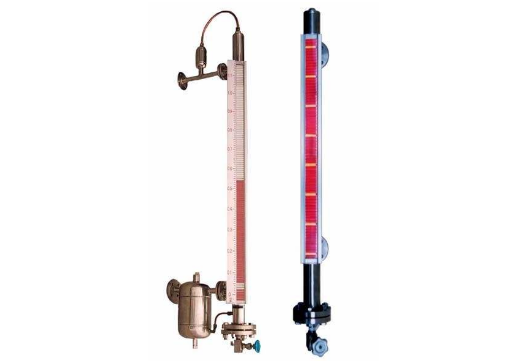The float level gauge is a commonly used liquid level measuring instrument. It works on the principle of buoyancy and constant buoyancy. The product has the advantages of stable performance, flexible use, high reliability and easy maintenance. Today we mainly introduce the structure of the float level gauge, hoping to help users better apply the product. 1, balanced Use a pulley and rigging to connect a balancing force on the outside of the container, such as a counterweight or spring, to the float inside the container. When the float moves up and down with the liquid surface, the rigging, the pulley or the counterweight or the spring are moved together, and the liquid level is read outside the container by detecting the displacement or rotation in the movement. Such liquid level gauges are widely used in large storage tanks, such as buoy level gauges and steel strip level gauges. 2, lever type Set a lever and set the fulcrum on the wall of the container, and fix the float to the end of the inner side of the container. When the float moves up and down with the liquid surface, the lever is moved at the other end of the container, or the fulcrum is rotated. The displacement or corner of the movement can read the liquid level outside the container. Such liquid level gauges are often used on moving containers or as liquid level switches due to their structural characteristics resulting in high resistance to external forces and high reliability. Common: marine level gauges, float switches, etc. 3, link type A connecting rod is arranged on the upper part of the floating ball, and when the floating ball moves up and down, the connecting rod is synchronously moved up and down, and the liquid level is read at the upper end of the connecting rod. This type of level gauge is suitable for level measurement of liquid levels below the human operating height (eg groundwater pool). 4, guide type The float is made into a ring sleeve on a guide rod, and the float moves up and down along the guide rod according to the liquid level change. A permanent magnetic object is placed inside the float, and a magnetic sensor is disposed inside the guide rod, and the position of the float is detected by the magnetic sensitive element and converted to an electrical signal output corresponding to the level of the liquid level. Such a level gauge performs better when there is severe movement of the medium in the container, and has a simple structure when the remote signal is not required to be instructed by the on-site liquid level scale. At the same time, there are currently more types of "float level gauges" in naming. 5, connected to the tube A vertical pipe is arranged outside the container, and the pipe is connected to the container through the pipe. According to the principle of the connecting pipe, when there is liquid in the container, the liquid enters the vertical pipe and is equal to the liquid level in the container. At this time, a float is built in the pipe, and the position of the float can reflect the liquid level in the container. Such a level gauge is not affected by the horizontal movement of the liquid in the container because the float is placed outside the container. Therefore, the adaptability is good, and high measurement accuracy can be realized in more application environments.
Tert-butyl Hydroperoxideis a hydroperoxide, in fact one of the most widely used in a variety of oxidation processes, for example the Halcon process.It is normally supplied as a 69–70% aqueous solution. Compared to hydrogen peroxide and organic peracids, tert-butyl hydroperoxide is less reactive and more soluble in organic solvents. Overall, it is renowned for the convenient handling properties of its solutions. Its solutions in organic solvents are highly stable.
Industrially, tert-butyl hydroperoxide is used to prepare propylene oxide. In the Halcon process, molybdenum-based catalysts are used for the reaction.
On a much smaller scale, tert-butyl hydroperoxide is used to produce some fine chemicals by the Sharpless epoxidation.
TBHP Is a volatile, yellowish liquid ,it is alkyl hydroperoxide initator for polymerization of acrylic emulsion ,and wiedely used as raw material for organic peroxides synthesis.
Miscible with organic solvents such as alcohols,esters,olefins and NAOH solution.Slightly miscible with water.
Tert-Butyl Hydroperoxide,Tert Butyl Peroxide Structure,Butyl Hydroperoxide,Tbhp Tert Butyl Hydroperoxide Jiangxi Zhewei Material Technology Co.,Ltd , https://www.jxzwchem.com
